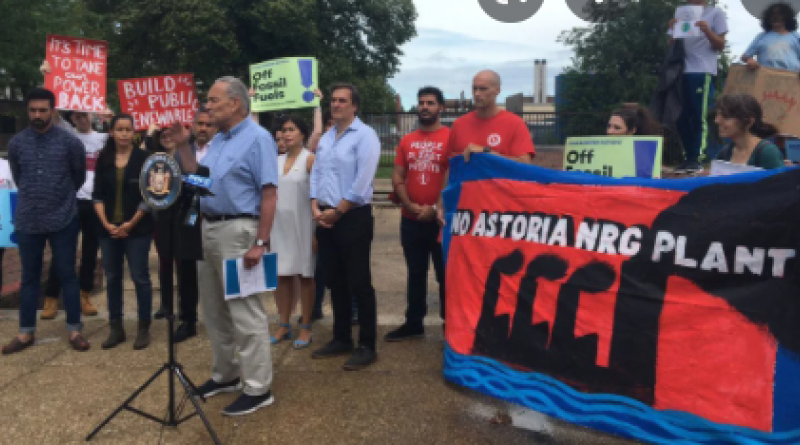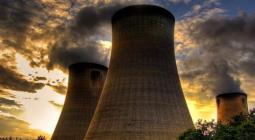U.S.: Proposed gas plants found unnecessary and inconsistent with New York climate law

State regulator rejects gas owners’ vague promises of shift to non-fossil fuels as “aspirational”
A New York state environmental agency recently saved electricity ratepayers millions of dollars by denying permits for construction of two unneeded natural gas power plants. In two decisions on permit applications to replace aging power plants scheduled for shutdown, the agency conducted a vigorous assessment of the necessity of the projects. It also identified concerns about vague promises of future transition to hydrogen or renewable natural gas. The decisions provide a useful example of how agencies should scrutinize key issues when reviewing permit applications for new natural gas infrastructure projects today. Other states should take note.
The New York Climate Leadership and Community Protection Act requires 100 percent zero-emission electricity by 2040. The law, which took effect Jan. 1, 2020, establishes economy-wide requirements to reduce statewide greenhouse gas (GHG) emissions. The New York Department of Environmental Conservation is required to deny air permits for projects that would be inconsistent with or interfere with attainment of the statewide GHG emission targets unless the department can either produce a detailed statement of justification, or identify alternatives or GHG mitigation measures for the project.
CITING THE NEW STATUTE, THE DEPARTMENT ISSUED NOTICES OF DENIAL of the air permit applications on Oct. 27 for two proposed natural gas-burning power plants—the proposed 536-megawatt Danskammer Energy LLC project in Newburgh and the 437-megawatt Astoria Gas Turbine Power in Queens. The department, overseen by New York Gov. Kathy Hochul, concluded the construction and operation of the proposed plants was inconsistent with the climate law.
Although both applicants said they planned to convert their plants eventually to either renewable energy-based (green) hydrogen or renewable natural gas, the permit applications submitted were for 100 percent natural gas-burning facilities. The department determined that each project would be “a new source of a substantial amount of GHG emissions, including both direct and upstream GHG emissions” and “would constitute a new and long-term utilization of fossil fuels to produce electricity without a specific plan in place to comply with the requirements of the Climate Act.”
The department decided it could not excuse either plant’s inconsistency with state climate goals based on any need for the project’s energy. It examined the 2021 updates to the Reliability Needs Assessment, a biennial study of the adequacy of New York’s bulk power transmission facilities produced by the New York Independent System Operator (NYISO). The NYISO reassessed its 2020 Reliability Needs Assessment in light of two reports. The first report reduced long-term projections for peak power needs based on changed economic and energy patterns expected to persist after recovery from the COVID-19 pandemic. The second identified significant improvements in bulk power transmission facilities that strengthen the flexibility of the grid to respond to local peak energy priorities. The NYISO assessment found no need for additional capacity in the areas that would have been targeted by the two plants, and said capacity could even be reduced without generating a “loss of load expectation” violation under state law. On the basis of that data and analysis, the department concluded that the applicants had failed to show a reliability need for their projects.
The department found the discussions of potential future use of green hydrogen or renewable natural gas at the proposed facilities were essentially “aspirational.” Neither the Newburgh nor the Queens project had a specific plan, an identified fuel source, or a timeline for conversion.
REGULATORS SAID ANY PLAN TO USE HYDROGEN WOULD REQUIRE FURTHER ANALYSIS, noting, “When compared to natural gas, hydrogen has a higher explosive potential, a higher leak potential, a lower volumetric heating value, and a higher flame temperature.”
The department also flagged the problem of higher emissions of nitrogen oxides from hydrogen combustion. The lower volumetric heating value of hydrogen means more fuel must be burned to achieve the same energy. The increased volume of hydrogen fuel, burned at a higher temperature, is expected to cause higher emissions of nitrogen oxides. Nitrogen oxides react with hydrocarbons to form smog (ozone). It observed that installation of additional nitrogen oxide controls might be needed.
Finally, the agency found that a blend of natural gas and hydrogen would still generate GHG emissions.
The department determined that it could not rely on applicants’ suggestions that their projects could one day burn renewable natural gas (generally, methane emitted from landfills or produced by anaerobic digestion of food waste or other organic waste). It observed that such a transition would depend on third parties developing the infrastructure to generate and deliver it in sufficient quantities for the project. It also noted that New York agencies have not yet determined the extent to which renewable gas combustion may be an acceptable option for meeting the state’s 2040 zero-emission goal.
THE ANALYTICAL APPROACH TAKEN BY THE DEPARTMENT IN THE TWO DECISIONS IS A GOOD EXAMPLE of the approach that IEEFA has urged the Federal Energy Regulatory Commission to take in deciding whether to approve or deny proposed interstate natural gas pipelines. The Natural Gas Act requires the agency to consider the necessity for such a project. Its approval must take the form of a “Certificate of Public Convenience and Necessity.” The commission currently is reviewing how it makes such decisions, and IEEFA provided comments to the agency on the importance of conducting a rigorous analysis of need.
FERC’s actions must also comply with the National Environmental Policy Act, which similarly requires the agency to consider whether a proposed project is necessary. For any project that would have a significant environmental effect, the agency must produce an Environmental Impact Statement (EIS). The law requires the EIS to evaluate all reasonable alternatives to the project, including the “No Action” alternative that entails assessing the need for the project.
In addition to climate policy considerations, rising natural gas prices make the prospect of new gas-fired power plants even less desirable. Recognizing changes in the energy industry as well as public energy policy, Moody’s Investors Services released a September 2020 report noting that new fossil fuel pipeline proposals face so many risks, it would reserve its long-term credit rating judgment based on actual completion and operation of the projects. Moody’s had expressed more optimism about gas-fired power plants, largely because of low natural gas prices. Since then, however, the price scenario has changed. As an IEEFA commentary recently observed, “High and volatile gas prices are making renewables—whose costs keep falling—all the more attractive.”
Like the now-defunct Northeast Supply Enhancement (NESE) gas pipeline project proposed by the Williams Companies, whose weak claims of necessity could not justify the environmental risks, the Danskammer and Astoria projects failed to withstand a vigorous needs scrutiny. New York’s robust scrutiny serves the interests of energy ratepayers and the public by preventing anachronistic gas infrastructure projects that fail to build toward an economically sustainable and climate-responsible energy system.
Suzanne Mattei (smattei@ieefa.org) is an IEEFA energy policy analyst.
15 November 2021
IEEFA




